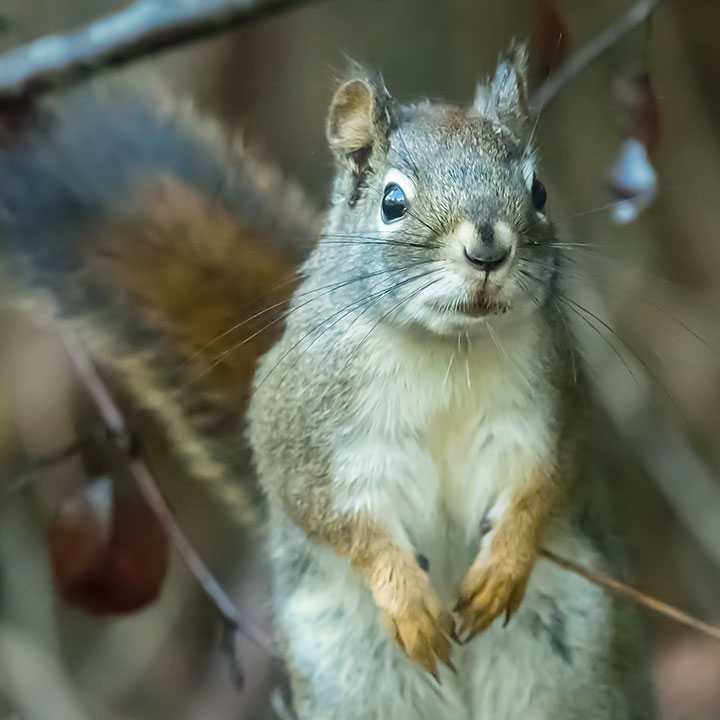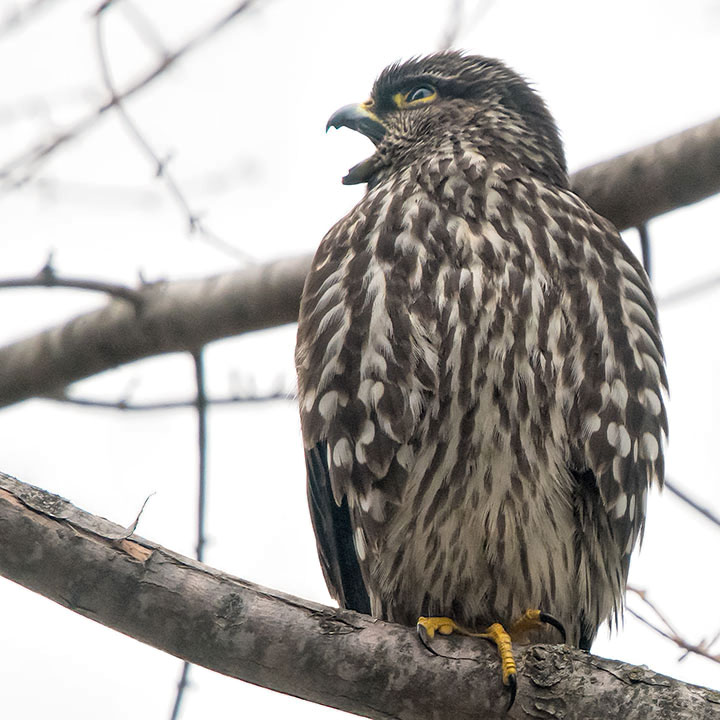While the naturalist in me likes to explore interesting behaviours — Ogopogo, planing, katabatic winds — the photographer in me just likes to take portraits — eagle, otter family, black grizzly.
Here are two portraits from two days ago.
Surely our most vocal wild mammalian companion, the Red Squirrel, will vigorously denounce all human interlopers. Usually seen on a distant branch, on this occasion, a squirrel dropped down beside me and we stared at each other only long enough for me to capture a portrait.

A decade ago, I only saw Merlins about three kilometres east of my home. Then they shifted a bit closer. This year, one has chosen to hunt right here. Consequently, this falcon has made a stunning difference in the presence of smaller birds: Many now just avoid my property as being far too risky. The compensation is a really close view of a Merlin. Easily seen in this side view of the beak is the tomial (i.e., cutting) tooth. The tooth (and its matching notch on the lower mandible) is a characteristic of falcons and is used to bite through the cervical vertebrae and so sever the spinal cord of their prey.


Never knew about falcons’ special tooth; do eagles and osprey have a similar tooth?
Birthe
Birthe, this took some digging to answer. It seems that the tomial tooth developed on the basis of a need to snap necks. The osprey has no need for this in that the fish is killed by merely lifting it from the water. Eagles lack it. Some sources claim that only falcons have it. Around here that includes Merlins and Kestrels. However, there are also raptors in Order Accipitriformes, such as kites and, around here, the Sharp-shinned Hawk and Cooper’s Hawk that have this feature. Interestingly, a local non-raptor, the Northern Shrike, has a tomial tooth that it uses to dispatch its prey. That seems to be it: buteos, such as the Red-tailed Hawk, lack this killing feature.
Alistair thank you for the portrait of the Merlin, a bird I admire and respect despite that extra tooth! Last year, I found an intact wing of a flicker in the woods close to you….I wonder if it was a Merlin on a foray? I love their call from the high trees. Beautiful song.
Eileen, other years we had copious Flickers and Tree Swallows. Now that the Merlin has moved in, those other birds are rare sightings. Even Robins seem to be avoiding us.
Do they mainly feed on birds or do they take small prey like voles and maybe the occasional mouthy red squirrel?
Mary, Merlins mainly eat birds (which they capture in flight), but will also sometimes take dragonflies, bats, birds in nests, and small mammals.
Thanks! I wasn’t sure! I have a Cooper’s Hawk that hangs around. I have many bird feeders. I think the Hawk thinks there is easy pickings. Luckily he or she doesn’t show up often enough to keep away my birds. I have a family of Pileated Woodpeckers that come in now.